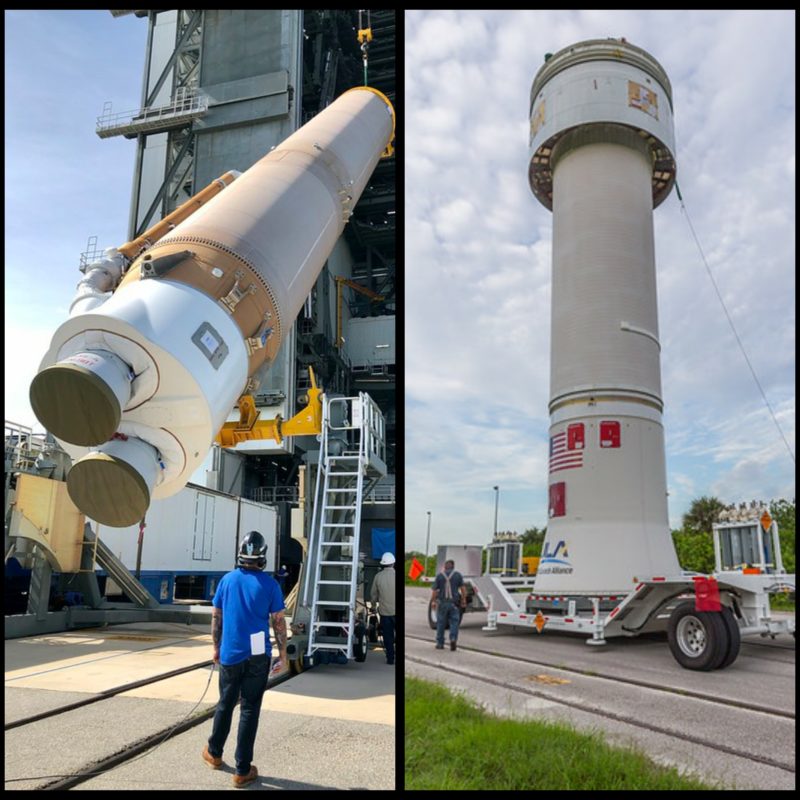
United Launch Alliance (ULA) is full steam ahead at Cape Canaveral Space Force Station in Florida, where the company recently completed stacking the uniquely configured Atlas V rocket which will launch Boeing’s second un-crewed Orbital Flight Test of their Starliner crew capsule under contract with NASA’s Commercial Crew Program to the International Space Station (ISS).
ULA transported the 107-foot-long Atlas first stage to their 30-story tall Vertical Integration Facility (VIF) at launch complex 41 last month, where they raised it vertical and hoisted it atop the rocket’s Mobile Launch Platform. ULA then mated two Aerojet Rocketdyne AJ60 solid rocket boosters to the bottom of the stage on July 6 and July 8, which will provide almost half of the energy needed to launch the million-pound rocket and Starliner off Earth and towards the ISS. All total, Atlas and its two SRBs will roar off Earth pushing 1.6 million pounds of thrust.
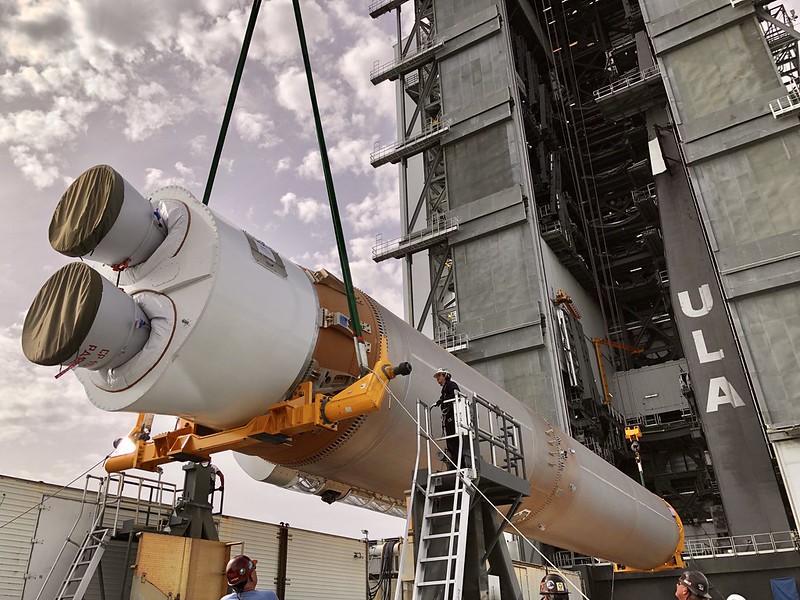
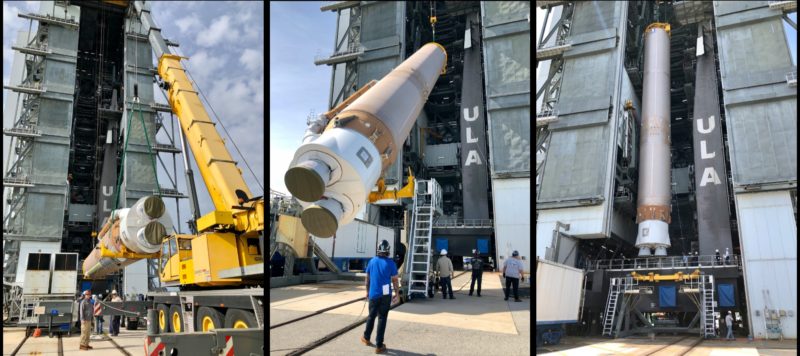
The vehicle’s Dual Engine Centaur upper stage, consisting of an interstage, two RL10A-4-2 cryogenic engines and Launch Vehicle Adaptor, was then transported to the VIF and hoisted atop the rocket on July 9, which will produce 44,000 pounds of thrust following seperation of the first stage to send Starliner into the needed trajectory for the ISS.
Technicians are now conducting various activities on the stacked vehicle to verify it is good to go and ready to receive the spacecraft itself, including powering up the rocket, checking the flight control systems on both stages, performing engine steering profiles and running a Combined Systems Test. They will then transport the capsule from Boeing’s Commercial Crew and Cargo Processing Facility (C3PF) at neighboring Kennedy Space Center to the VIF for attachment to the 172-foot tall rocket, aiming for launch no soonerlr than July 30 at 2:53pm EDT (1853 UTC), at the precise moment the ISS’s orbital plane goes over Cape Canaveral.
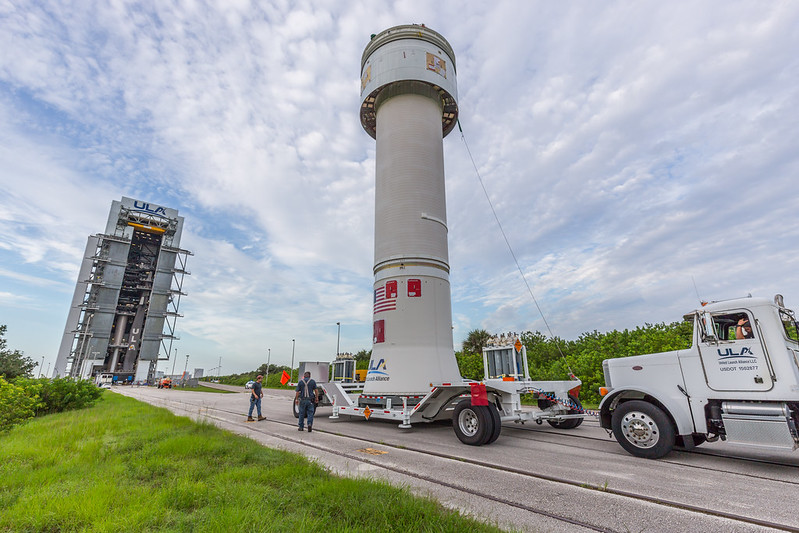
The mission comes following a questionable first Orbital Flight Test in 2019, where the spacecraft suffered a software timing anomaly shortly after launch which prevented it from ever reaching the ISS. And while they did save the spacecraft and were able to conduct various other test objectives, and brought the spacecraft back to Earth safely, the bottom line is they still have yet to prove it can safely rendezvous with the ISS, which is the whole reason NASA awarded them a multi-billion dollar contract years ago along with SpaceX, who has now been flying crews on their Dragon spacecraft for over a year (and with a smaller dollar amount contract).
Despite an incomplete OFT-1 mission, Starliner successfully demonstrated its propulsion systems, its communications systems, its Guidance, Navigation and Control (GNC), its Environmental Control and Life Support System (ECLSS) and—through a series of in-flight extension/retraction tests—its NASA Docking System (NDS).
And although NASA noted that an actual ISS docking was not a mandatory requirement to “crew-certify” Starliner, and pointed out that had a crew been aboard OFT-1 they could have taken manual control and likely overcome the automated timing problem, it became increasingly likely as 2020 dawned that another uncrewed flight would need to take place.
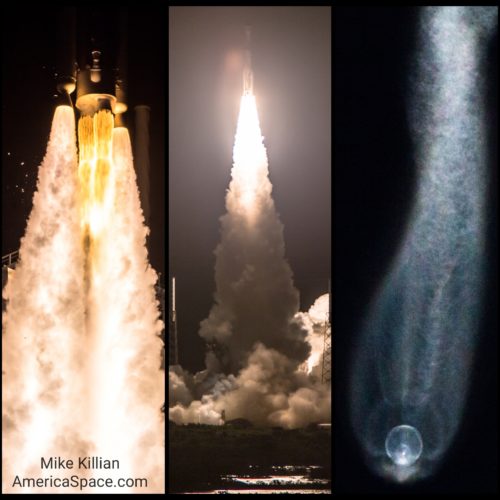
A High Visibility Close Call (HVCC) Review, led by NASA Associate Administrator for Human Exploration and Operations Kathy Lueders and Commercial Crew Program Manager Steve Stich, revealed a worrisome number of technical and organization root causes for the troubled mission. In March 2020, a joint NASA/Boeing Independent Review Team (IRT) found that three principal anomalies had plagued the flight. Two were classified as “software coding errors”.
You can read more in depth details on the issues HERE in our prior reporting, along with the resolutions. Bottom line now is both Boeing and NASA are confident the issues are resolved, and look ahead to the second OFT as soon as July 30, which is set to last approximately a week and will dock and undock autonomously at International Docking Adapter (IDA)-2, on the forward-facing port of the station’s Harmony node.
The spacecraft will also deliver approximately 760 pounds of payload, including 440 pounds of NASA cargo and supplies for the current ISS crew members, a commemorative U.S. flag that will remain aboard the ISS until it returns to Earth on Starliner’s CFT, and provisions like clothes and sleeping bags for CFT astronauts Barry “Butch” Wilmore, Nicole Mann and Mike Fincke.
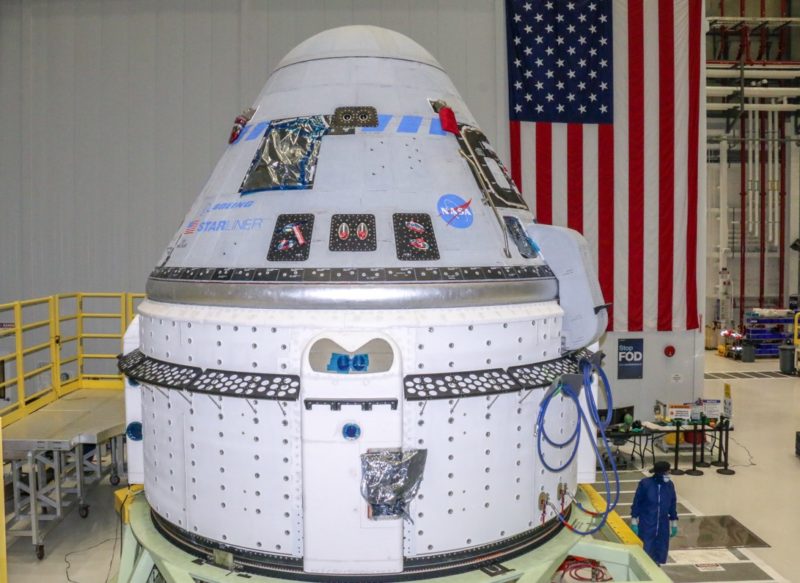
Boeing’s 320 pounds of cargo includes other special commemorative items for Starliner employees, suppliers and partners who have worked to get the spacecraft flying safely. A card that Boeing’s founder, Bill Boeing, signed and used to travel the United States by air will also fly on OFT-2, along with Silver Snoopy pins, which are presented by astronauts to people that directly contribute to the success of the U.S. human spaceflight program.
Rosie the Riveter commemorative coins will also be onboard, created to celebrate last year’s passage of the Rosie the Riveter Congressional Gold Medal Act, which honors 19 million American women who worked in the aerospace industry as men went off to fight in World War II.
And Boeing’s Rosie the Riveter ‘anthropometric test device’ will fly once again in the commander’s seat, same as on OFT-1, except this time she will serve to help the spacecraft maintain its center of gravity throughout the various phases of the flight.
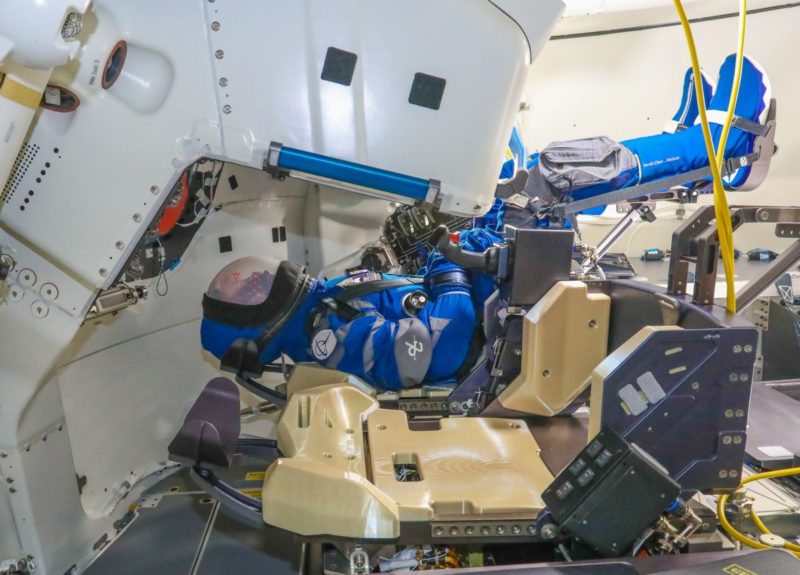
“She is a 180 pound test device in European tan that is meant to represent the 50th percentile of human dimensions in height and weight,” said Melanie Weber, the subsystem lead for Crew and Cargo Accommodations on the Commercial Crew Program. “Rosie’s first flight provided hundreds of data points about what astronauts will experience during flight, but this time she’ll help maintain Starliner’s center of gravity during ascent, docking, undocking and landing.”
You can read more about Rosie’s role in the mission HERE.
Both the Starliner crew module and service module are now fueled for flight, and are undergoing final preparations at neighboring Kennedy Space Center. NASA and Boeing have closed all actions recommended by the joint NASA-Boeing Independent Review Team, as well, which was formed as a result of Starliner’s first OFT. A critical Flight Readiness Review is set for July 22, which will give a GO / NO GO to proceed towards launch.
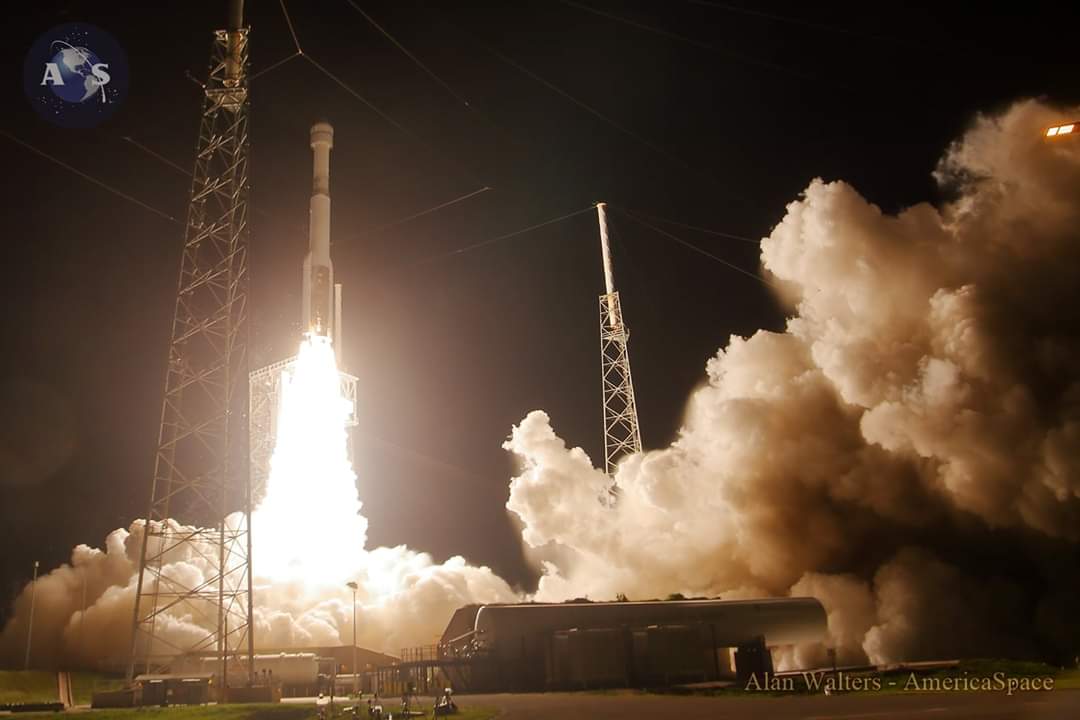
In the meantime, mission control teams in Florida and Texas are conducting simulated mission dress rehearsals for OFT-2 and future crewed flights. Starliner’s landing and recovery teams will also do an on-site checkout of one of the vehicle’s landing zones.
“I am extremely proud of the NASA and Boeing Starliner teams as they methodically work toward the OFT-2 mission next month with final checks of the crew module and service module hardware and software as we prepare for this important uncrewed test mission,” said Steve Stich, NASA Commercial Crew Program manager. “Closing all of the Independent Review Team findings for the software and communications systems is a huge milestone for the Commercial Crew Program and included many long hours of testing and reviews by our dedicated Boeing and NASA teams during this Covid-19 pandemic.”
Assuming that the mission runs without significant wrinkles, the way will be clear for the CFT with Commander Barry “Butch” Wilmore, Pilot Nicole Mann and Joint Operations Commander (JOC) Mike Fincke, before the end of the year.
.
.
FOLLOW AmericaSpace on Facebook and Twitter!
.
.
Missions » SLS » Artemis »



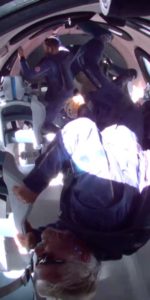
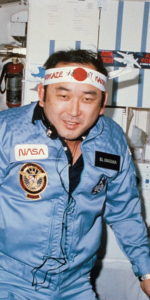
2 Comments
2 Pings & Trackbacks
Pingback:Atlas Rocket Stacked, Awaits Starliner’s Arrival for 2nd Orbital Flight Test July 30
Pingback:Atlas V, Starliner Set for Historic Space Station Launch on Friday